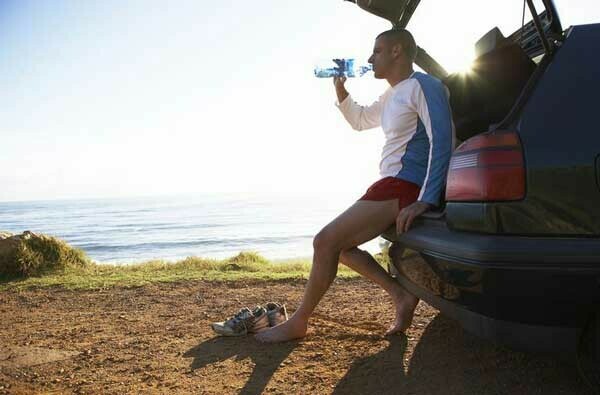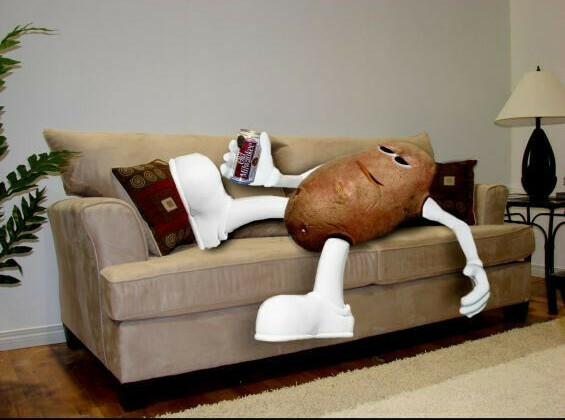WHAT IS BURNOUT?
If we feel worse after a workout, we may be overtraining and heading toward burnout. Burnout is real. It is a mental and physical state of exhaustion. It may not be easy for a dedicated fitness enthusiast to slow down and take breaks, but recovery and rest are essential.
Here are some of the symptoms of exercise burnout:
- Skipping workouts. The problem is not the rest that we all need, it’s the mental fatigue. We may feel guilty or ashamed or we may be doing too much overthinking. In my personal experience, it is boredom. Doing the same workout can be monotonous after several months.
- Feeling exhausted. If we feel exhausted all of the time, we may have burnout. This is not only a fitness phenomenon. We may burn out from too much studying or too much time being spent on a particular project.
- Making excuses. If we are unable to do a scheduled workout, we may feign illness as an excuse when we really are feeling okay. We may simply need a break and may be trying to justify missing the workout.

- Irritability. This is also a symptom of all kinds of burnout, not only exercise burnout. When we feel exhausted or overloaded, our increased sensitivity and irritability are normal. We may be more apt to react harshly when driving if someone cuts in front of us.
- Post-workout discomfort. If we feel abnormal pain or general soreness after a workout, it may be time for a break. Some soreness in the beginning is to be expected, but this should not continue indefinitely
WHAT TO DO ABOUT IT
First of all, we need to ask ourselves these questions if we are not sure if we are experiencing burnout:
- Am I training too much or too hard?
- Have I been feeling unusually sore or exhausted lately?
- Has there been a significant decrease in my workout performance?
- Do I have persistent joint pain?
- Am I having trouble sleeping?
Forbes tells us that the following are the best strategies to combat fitness burnout:
DO WHAT YOU LOVE. The best exercise is the one that we will actually do. Jumping rope is a great exercise, but if we don’t enjoy it, we will not consistently do it. Fortunately, there is an unlimited world of exercise options. I enjoyed tennis for over five decades and never thought of it as a sport for conditioning. I was concerned about improving my strokes and winning matches.
TAKE IT SLOW. Beginners should do simpler forms of exercise – walking, jogging, simple yoga poses. Low reps and sets with lighter weights are best for beginners. Growth will come easily if we use correct form. I have seen grown men walk into a gym and try to use weights too heavy for them (only because they thought their masculinity was at stake).
MIX THINGS UP. Our exercise routines are more fun and more effective if we try a variety of fitness routines or sports activities. Personally, I like to change my forms of resistance, reps and sets periodically to avoid monotony. Also, I play music when on my treadmill and like a variety of music genres.
GIVE YOURSELF TIME TO REST AND RECOVER. We should know that muscles grow during our recovery periods after our workouts. During the workouts, we create microscopic tears in our muscles. The muscles only become stronger as they rest afterwards. Too much stress without healing time can lead to diminished performance and lack of progress.

DON’T FOCUS TOO MUCH ON THE NUMBERS. It is great to set a goal and to stay focused as we continue with a fitness routine. We can enjoy a sense of achievement as we reach our goals. But our weight can go up even when we do our workouts as we plan. Our strength may take a downturn. Progress can be inevitable, yet not linear. Exercise activities should be fun and rewarding, not a source of disenchantment.
EQUIPMENT
I have generally worked out at gyms in my earlier years, but now I do a workout routine at home every morning before breakfast. See my prior post, Home Workouts Or Gyms?
Our choice of where to work out is not nearly as important as our choice to do so, in my opinion. Gyms have instructors, unlimited equipment in most cases and the energy available from others who are alongside us. Home workouts can be finished quickly and conveniently.
I still have a gym membership and when I worked out at gyms, I always had home equipment as a back-up plan.
As an affiliate marketer, I like to use Amazon links within my posts. Amazon has about anything anyone could need and their service is excellent. As an associate, I may earn from activity on the links I use. This is the essence of affiliate marketing. See my upper menu – BECOME AN AFFILIATE MARKETER – for information on how this works.
Each link will show detailed information, prices, pictures, reviews and suggestions for other similar items. These are a few items I use at home.
6 pound medicine ball. This is the exact medicine ball I use, generally every day. I like it for core exercises, since I can work my abdominals, obliques and hips standing up. See my prior post on this Perfect Piece of Home Fitness Equipment
Nordic Track treadmill. This is the treadmill I use at home, generally 3-4 times per week. I have it at a window, so I can see what’s going on outside as I walk on the treadmill and play music. It is lasting well after several years of heavy usage.
Resistance bands with handles. I use these every other day, for part of my upper body routine. They can be attached at a door for rowing type exercises and generally can provide a full body workout.
Loop bands. I use these for physical therapy and for biceps curls. Women like them as “booty bands”. They are less than $12.
Push-up board. I have used this device for several years. It gives us hand placements for different push-up effects and handles that elevate the push-up to make it more effective.
BULLWORKER FITNESS TOOLS
These are isometric/isotonic tools that give us many unique ways to work out. They are available directly from the company. I use both the Steel Bow and the Bow Classic. They are easy on my joints and give me as much resistance as I can handle. See my recent post on Bullworkers.
Full information on Bullworker Fitness is available at the side of my website. Click on the red link for access to the Bullworker website.
FINAL THOUGHTS
It can be challenging to be an exercise fanatic while observing the wisdom associated with rest and recovery periods. The irony is that we may mistakenly view burnouts as reasons to work out even harder.
I know the feeling. We don’t want to be one of these. See below.

But the rest and recovery are absolutely necessary for muscle growth and the mental clarity to continue effectively toward our goals. We can be prudent without being couch potatoes.
Please leave me any comments or questions in the “Comments” section below.
This is a really insightful article on avoiding exercise burnout. I especially appreciate the tips on varying workouts and listening to your body. Could you elaborate more on how to effectively incorporate rest days without feeling like progress is being hindered? Also, do you have any recommendations for balancing high-intensity workouts with low-intensity ones to maintain motivation and prevent burnout?
All the best.
Hi Aris! Thanks for your input. Incorporating rest days effectively will depend upon our experience with workouts, our progress thus far and our mental outlook. Beginners are wise to workout on alternate days during the week, not on consecutive days. Later, split routines may be used to include more sets/reps in a given week – leg day, upper body day, etc. With high intensity workouts, such as High Intensity Interval Training, we need more rest than with other routines. Two workouts per week with H.I.I.T. will be enough in most cases. But even that depends on the length of the H.I.I.T. Cameron Diaz does 5 minute H.I.I.T. treadmill workouts with good results.